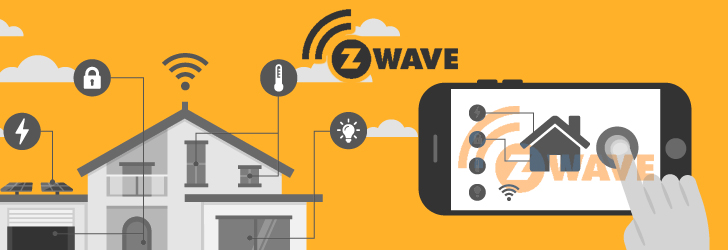
With home & industrial automation slowly getting prominence across the globe, the efficiency of supporting infrastructure to perform as desired plays a significant role. Just like Zigbee, Z-Wave is one such protocol which supports communication between smart devices. Z-Wave relies on Radio Frequency (RF) for performing signaling and controlling operations.
The beginning of Z-Wave
Z-Wave protocol was released in 2004 by Zensys, a Denmark-based start-up company. The primary motive of the protocol designers was to build a simpler and less expensive network infrastructure than Zigbee. Later in 2009, Zensys was acquired by Sigma Designs, a California-based publicly incorporated company. As per the information available on Sigma Designs’ website, more than 700 companies offer around 2400 Z-Wave compatible products across the world. On the other hand, there are around 2,500 devices being manufactured by more than 400 alliance members of Zigbee Alliance.
Z-Wave v. Zigbee
Z-Wave operates at frequencies between the range of 800-900 MHz while Zigbee even operates at a frequency of 2.4 GHz. This means that the data transfer rate for devices supported by Z-Wave is considerably lower than those supported by Zigbee. Z-Wave supports data transfer at 9.6-10 kbps while Zigbee can support transfers up to 250 kbps.
However, the chances of an external interference are minimal in Z-Wave while there is a definite possibility in Zigbee devices. Z-Wave, as well as Zigbee, implement mesh network topology while adding devices to the network. Z-Wave can only support up to 232 devices while a Zigbee network can support more than 65,000 devices. From a home owner’s context, even 232 is a sufficient number of devices that he might require.
Both of these technologies use AES 128-bit encryption and claim that they are safe and secure from hacking. Considering that absolute security is a misnomer, it is worth noting that both the standards are having the same approach when it comes to the security of end-user. In addition, the range of Z-Wave devices is around 30 meters while the range of Zigbee devices is limited up to 20 meters.
One important point that must be noted is that Zigbee is an open standard which is being run and governed by Zigbee Alliance while Z-Wave is privately owned by Sigma devices and hence, they have stricter controls to ensure the compatibility of devices with multiple controllers.
What's next?
In the Consumers Electronic Show of 2018 (CES 2018) organized by Consumer Technology Association from January 08-11, 2018, the latest Z-Wave platform called 700 Series was launched. It has a range of 100m for point-to-point connection and operates at such low power that some sensors could even last for 10 years on a coin cell. Moreover, this new series is backward compatible i.e. 700 Series is also compatible with previously launched devices.
From a general point of view, it is not clear whether both these protocols i.e. Zigbee & Z-Wave will prevail together or one will win and other will lose. Till then, let's see how time plays out.
Share this post
Leave a comment
All comments are moderated. Spammy and bot submitted comments are deleted. Please submit the comments that are helpful to others, and we'll approve your comments. A comment that includes outbound link will only be approved if the content is relevant to the topic, and has some value to our readers.

Comments (0)
No comment